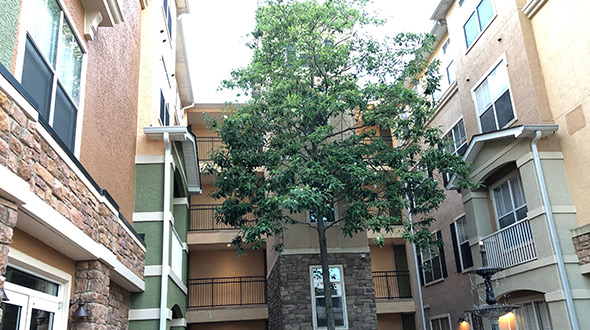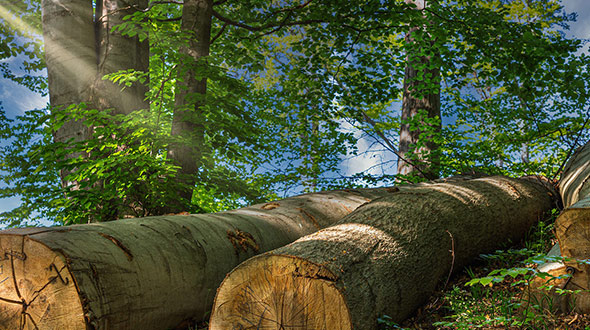
Allowing a tree to fall ill and die can impact other plants in your yard, or result in catastrophic damage to your property and wellbeing. By knowing how to protect trees from planting to maturity, you are giving them the best chance to thrive.
toddsmariettatreeservices.com gathered information about the steps you can take to protect your trees from multiple threats and hazards.
Right Tree Right Place
Before even planting a tree, your first measure of protection for it is to select an appropriate species along with choosing the best location to plant it. When choosing a tree species, consider the following:
• Do you prefer an evergreen or a deciduous tree
• Is it a flowering species
• Is the species cold hardy for your location on the USDA plant hardiness zone map
• Is the species an overstory or understory tree
• Is the species known to have invasive roots
• Has the species developed resistance to any local pathogens or pests
• What problems are the species known to develop as it matures

Once you have determined the species of the tree you would like to plant, it’s time to find the right location. When selecting the location of your new tree, take the following into consideration:
• Is the location sheltered from the wind
• Does the location receive full sun
• Is the soil well-drained
• Is the location far enough from structures and other trees to avoid root damage
• Are underground utility lines far from the location
• Look up. Is there anything overhead that could obstruct or interfere with the tree’s growth
When considering the location for your new tree, keep in mind that a growing tree cannot simply move a few feet to the left. As you select a planting location, remember that your tree will be in that spot for many decades.
Building and Structure Placement
As your landscape evolves, the protection of your trees must be at the forefront of your plans and designs. The following will help you make informed decisions about changes to your landscape and hardscape.
• Buildings, sheds, and fences can serve as wind blocks
• Keep new underground water, sewer, cable, and electrical lines far from your tree’s root system
• Keep patios, walkways, driveways, and other features from encroaching on the root plate (within the drip line) of your tree.

Roots exist to absorb oxygen, water, and nutrients for the livelihood of the tree. Much of this process occurs in the top 6 to 8 inches of soil within the tree’s drip line (edge of the canopy). Trees can be best protected by having trenching, construction, and feature installation done outside the drip line, away from the tree.
Read more about tree protection during construction projects at toddsmariettatreeservices.com/protection-instructions-construction-landscaping-hardscaping/
Protect Your Tree from Soil Compaction
Soil compaction occurs when foot traffic, vehicle movement, equipment storage, or natural conditions cause the soil to compact and harden. This condition is particularly deadly when it occurs in areas surrounding trees. Tree roots are unable to absorb oxygen, nutrients, and water from compacted soil, and under these conditions will cause hydraulic failure and death of the tree.
The following are ways to protect your tree from soil compaction:
• Mulch the entire root plate
• Divert all foot traffic away from your trees
• Avoid storing parts and equipment of any kind under your trees
• Keep soil moist (not wet)
• Fence off trees during construction projects

Read more about the benefits of mulching and how it helps prevent soil compaction at toddsmariettatreeservices.com/proper-mulching-techniques-around-trees/
Protect Your Trees From Freeze
Whether your tree is evergreen or deciduous, there are some risks to leaving it exposed to sustained freezing temperatures (below 32 degrees) as it matures. Winter tree injury can appear as the following:
• Dried out evergreen foliage
• Broken limbs and branches from snow/ice weight
• Southwest injury or sunscald
Winter injury can be avoided by more efficient watering, tree wrapping, and bark wrapping. Taking steps to protect your trees in the first three to five years of growth will help it defend itself from injury as it reaches maturity.

Read more about winter protection for trees at toddsmariettatreeservices.com/how-to-protect-your-trees-winter/
Pruning, Cutting, and Emergency Tree Removal
One of the most critical measures of tree protection is pruning. As your tree matures, it can develop abnormal growth, become infested, suffer from a disease, and be damaged during severe weather events.
Pruning or cutting dead or diseased branches helps your tree direct its energy to new, healthy growth. When disease and infestations occur on the tree trunk, the only remaining option may be to remove the affected tree. This, at times, is the only way to save other healthy trees from suffering the same fate.

Read more about tree pruning, cutting, and emergency removal at toddsmariettatreeservices.com/right-time-cutting-pruning-emergency-tree-removal/
Tree Protection
Besides maintaining the tree(s) on your property, there are many other ways you can help protect trees in your community and around the globe. The following are ways you can participate in the reduction of demand for timber and help preserve our forests:
• Encourage stewardship
• Reduce the amount of paper you use
• Exchange paper products for those made of alternative material
• Recycle used paper
• Reuse gift bags
• Buy used wooden furniture
• Borrow, share, and donate books
• Switch to digital books and reading material
• Educate others
• Support reforestation efforts
• Plant a tree

Any steps you take in the direction of tree protection and conservation add to a global movement to preserve our national and urban forests. Read more about encouraging stewardship and how tree ordinances are drafted and enacted at mortonarb.org/trees-plants/community-trees-program/protecting-trees
Preserving And Protecting Trees
In this article, you discovered information about how you can protect your trees from hazards and how to participate in the protection of trees in our urban and national forests.
By taking steps to protect your tree from its planting to its maturity, you can avoid the dangers of a sick or dying tree, causing significant damages when it falls.
Ignoring steps to protect trees can result in expensive damages and the abrupt loss of invested time and effort.
Sources:
canopy.org/tree-info/caring-for-trees/protecting-trees-from-freeze/
treessc.org/how-to-protect-a-tree/
extension.colostate.edu/topic-areas/yard-garden/protecting-trees-during-construction-7-420/
selectree.calpoly.edu/right-tree-right-place/
extension.umn.edu/soil-management-and-health/soil-compaction
(678) 505-0266
Originally published on: http://www.toddsmariettatreeservices.com/how-to-protect-trees/

No comments:
Post a Comment